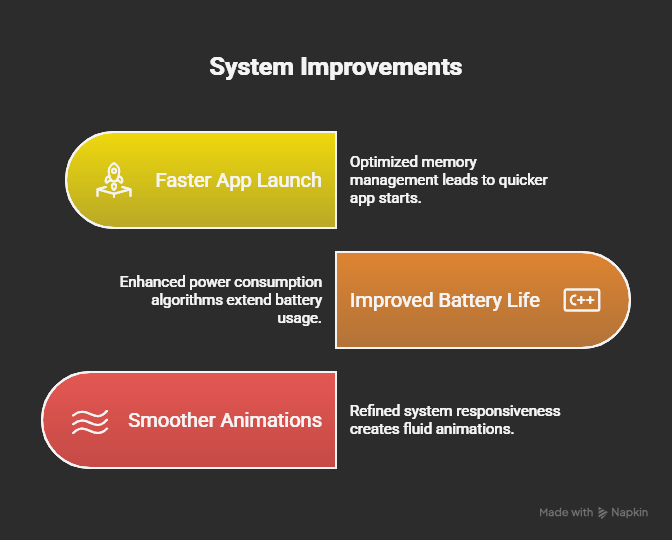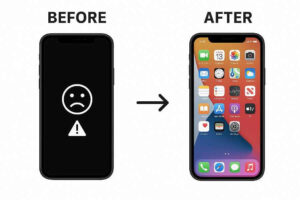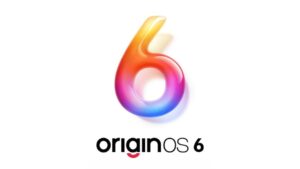Table of Contents
Complete MIUI 14 Compatible Devices List: Every Xiaomi Phone That Supports the Latest Update
Looking for MIUI 14 compatible devices? You’ve come to the right place. This comprehensive guide covers every Xiaomi, Redmi, and POCO smartphone that supports MIUI 14, plus everything you need to know about this powerful Android skin.

What Is MIUI 14?
MIUI 14 represents Xiaomi’s most refined Android customization to date, built on top of Android 12 and Android 13. This latest iteration focuses on system optimization, enhanced privacy, and improved user experience while maintaining the familiar MIUI aesthetic that millions of users love worldwide. I remember the first look of MIUI 13 and looking at what is happening now, it is a clear and big step forward. Three years ago in December 16 MIUI 13 was launched, and today we are talking about MIUI version 14.
The update brings significant performance improvements, with Xiaomi claiming devices experience 60% smoother operation compared to previous versions. The firmware size has been reduced, and memory usage optimized to deliver faster boot times and more responsive performance across all supported devices.
Key Features of MIUI 14

Enhanced Performance and Optimization
MIUI 14 introduces revolutionary system architecture improvements at the Android kernel level. The update includes:
- 214MB less boot-up memory usage for faster startup times
- 11% reduction in RAM usage for system apps including camera, clock, and messages
- 6% less background memory consumption compared to MIUI 13
- Automatic app compression for rarely used applications, potentially freeing up to 3GB of storage over three months
New User Interface Features
The most visible changes include enlarged folders that allow direct app access without opening the folder. Users can now choose between Large and XXL folder sizes, making home screen organization more efficient and visually appealing.
Enhanced customization options feature six new wallpapers, three additional clock widgets, four weather widgets, and redesigned battery and step counter displays. The Material You theming integration brings dynamic colors, though limited to four preset options on most devices.
Privacy and Security Improvements
MIUI 14 emphasizes on-device data processing for enhanced security. The update includes optical character recognition (OCR) that works entirely offline, supporting text recognition in eight languages without cloud dependency.
Advanced privacy controls ensure video chats and live streams remain secure with end-to-end encryption and no data stored in cloud services.
Read More: MIUI 13 Supported Devices List
Complete MIUI 14 Compatible Devices List
Xiaomi Series Smartphones
The Xiaomi flagship lineup receives comprehensive MIUI 14 support, covering devices from the latest Xiaomi 15 series down to selected Xiaomi 10 models:
Latest Generation:
- Xiaomi 15, 15 Pro, 15 Ultra
- Xiaomi 14, 14 Pro, 14T, 14T Pro, 14 Ultra
- Xiaomi 13, 13 Pro, 13 Lite, 13T, 13T Pro
Xiaomi 12 Series:
- Xiaomi 12, 12 Pro, 12X, 12 Lite
- Xiaomi 12T, 12T Pro
- Xiaomi 12S, 12S Pro, 12S Ultra
- Xiaomi 12 Pro Dimensity Edition
Xiaomi 11 Series:
- Xiaomi 11T, 11T Pro
- Xiaomi Mi 11, Mi 11 Pro, Mi 11 Ultra
- Xiaomi Mi 11 Lite 4G, Mi 11 Lite 5G
- Xiaomi 11 Lite 5G NE, Mi 11 LE
- Xiaomi 11i, 11i HyperCharge, Mi 11i
- Xiaomi Mi 11X, Mi 11X Pro
Xiaomi 10 Series:
- Xiaomi Mi 10, Mi 10 Pro, Mi 10S
- Xiaomi Mi 10i 5G, Mi 10 Ultra
- Xiaomi Mi 10T, Mi 10T Pro, Mi 10T Lite
- Xiaomi Mi 10 Lite Zoom
Xiaomi MIX and Civi Series:
- Xiaomi MIX 4, MIX Fold, MIX Fold 2, MIX Fold 3
- Xiaomi MIX Flip
- Xiaomi Civi, Civi 1S, Civi 2, Civi 4
Redmi Series Smartphones
The Redmi smartphone collection represents the largest group of MIUI 14 compatible devices, spanning budget to premium segments:
Redmi K Series (Flagship):
- Redmi K80, K80 Pro
- Redmi K70, K70 Pro, K70E, K70 Ultra
- Redmi K60 Ultra
- Redmi K50, K50 Pro, K50 Gaming, K50i, K50 Ultra
- Redmi K40, K40 Pro, K40 Gaming Edition, K40S
- Redmi K30 4G, K30 Pro, K30 Ultra, K30S Ultra
Redmi Note Series:
- Redmi Note 15, 15 Pro, 15 Pro+
- Redmi Note 14, 14 Pro, 14 Pro+, 14 5G, 14 4G
- Redmi Note 13, 13 Pro, 13 Pro+, 13 5G, 13 4G
- Redmi Note 12 and all variants
- Redmi Note 11 complete lineup
- Redmi Note 10 series
- Redmi Note 9 variants
Redmi Number Series:
- Redmi 15C
- Redmi 14C
- Redmi 13, 13 5G, 13C, 13R 5G
- Redmi 12, 12 5G
- Redmi 11 Prime, 11 Prime 5G
- Redmi 10 complete series
- Redmi 9T, 9 Power
Redmi A Series (Entry Level):
- Redmi A4 5G
- Redmi A3, A3 Pro, A3x
- Redmi A2, A2+
POCO Series Smartphones
POCO devices across all price segments receive MIUI 14 support, ensuring the gaming-focused sub-brand maintains cutting-edge software:
POCO F Series (Gaming Flagships):
- POCO F6, F6 Pro
- POCO F5, F5 Pro
- POCO F4, F4 GT
- POCO F3, F3 GT
- POCO F2 Pro
POCO X Series (Performance):
- POCO X6, X6 Pro, X6 Neo 5G
- POCO X5 5G, X5 Pro 5G
- POCO X4 Pro 5G, X4 GT
- POCO X3 GT, X3 NFC, X3 Pro
POCO M Series (Budget):
- POCO M7 4G, M7 Plus, M7 Pro 5G
- POCO M6 complete lineup
- POCO M5, M5s
- POCO M4 series
- POCO M3 variants
POCO C Series (Entry Level):
- POCO C85 4G
- POCO C75, C75 5G
- POCO C65, C55, C51
- POCO C40, C40+
Tablet Devices
Xiaomi and Redmi tablets receive dedicated MIUI Pad 14 optimization:
Xiaomi Tablets:
- Xiaomi Pad 7, Pad 7 Pro
- Xiaomi Pad 6S Pro 12.4
- Xiaomi Pad 6 Max 14
- Xiaomi Pad 5 complete series
Redmi Tablets:
- Redmi Pad Pro, Pad Pro 5G
- Redmi Pad SE, SE 8.7
- Redmi Pad 2 Pro
- Redmi Pad (original)
POCO Tablets:
- POCO Pad 5G
MIUI 14 Release Timeline and Availability
Global Rollout Schedule
Xiaomi implemented a phased rollout strategy for MIUI 14, beginning with flagship devices and gradually expanding to mid-range and budget smartphones:
Phase 1 (Q1 2023): Xiaomi 12 Pro, Mi 11 Ultra, Mi 11X Pro, Mi 11T Pro, Redmi Note 12 Pro Plus
Phase 2 (Q2 2023): Additional 25 devices including Redmi K40 series, Xiaomi 11 series, and POCO F-series phones
Ongoing Updates: Continuous expansion to remaining eligible devices through 2024 and beyond
Region-Specific Features
Indian market receives tailored MIUI 14 features with region-specific optimizations. Global versions maintain core functionality while some advanced features remain exclusive to Chinese ROM variants.
European users can access MIUI 14 through official channels or by adjusting device regions in settings, as demonstrated by POCO X3 Pro users switching to Poland region for update access.
How to Check MIUI 14 Compatibility
Manual Verification
Users can verify MIUI 14 compatibility through multiple methods:
- Settings Menu: Navigate to Settings > About Phone > System Update to check for available MIUI 14 updates
- Mi Pilot Program: Join Xiaomi’s beta testing program for early access to MIUI 14 features
- Official Channels: Monitor Xiaomi Community and official social media for region-specific rollout announcements
Device Information Apps
Third-party applications like “MIUI 14 Update Info” provide comprehensive compatibility checking and device information. These tools help users determine eligibility and track update progress across different regions.
Installation and Update Process
Over-the-Air (OTA) Updates
Most MIUI 14 compatible devices receive updates through the standard OTA process. Users should ensure stable internet connectivity and sufficient battery charge before initiating updates.
Manual Installation Options
Advanced users can install MIUI 14 through Fastboot ROMs or Recovery ROMs available from official Xiaomi firmware repositories. This method requires unlocked bootloaders and technical expertise.
Regional Considerations
Some users report success accessing MIUI 14 updates by changing device regions in settings, particularly switching to Poland or other European regions where updates deploy earlier.
Performance Impact and User Experience
System Optimization Benefits
Users report significant performance improvements after MIUI 14 installation:
- Faster app launch times due to optimized memory management
- Improved battery life through enhanced power consumption algorithms
- Smoother animations with refined system responsiveness

Notable Limitations
Some users experience regional feature disparities, where Chinese MIUI 14 versions include additional widgets, app behavior logs, and enhanced customization options not available internationally.
Older devices may receive MIUI 14 based on Android 12 rather than Android 13, potentially limiting access to newer Android features while maintaining MIUI improvements.
Future MIUI Development and Support
Long-term Device Support
Xiaomi demonstrates commitment to extended software support, with newer devices like Redmi Note 14 4G receiving four Android OS upgrades and six years of security updates. This approach positions MIUI 14 compatible devices favorably for long-term usage.
HyperOS Transition
Xiaomi’s HyperOS represents the next evolution beyond MIUI 14, offering enhanced device interconnectivity and cross-platform integration. Many MIUI 14 compatible devices will eventually transition to this unified operating system. And we’ve got you covered with a post on HyperOS 3 with all the new features and how you could benefit from them.
Conclusion
MIUI 14 compatibility spans an impressive 213 devices across Xiaomi’s complete ecosystem, from budget-friendly Redmi A-series phones to flagship Xiaomi 15 Ultra devices. This comprehensive support ensures users across all price segments can access enhanced performance, improved privacy features, and refined user interface elements.
Whether you own a gaming-focused POCO phone, a feature-rich Redmi device, or a premium Xiaomi flagship, MIUI 14 delivers meaningful improvements to daily smartphone usage. The update’s optimization focus and privacy enhancements make it a worthwhile upgrade for all compatible devices.
For users considering new device purchases, choosing from the MIUI 14 compatible devices list ensures access to Xiaomi’s latest software innovations and long-term update support. With regional rollout continuing and additional features planned, MIUI 14 represents Xiaomi’s commitment to delivering cutting-edge software experiences across its entire device portfolio.
Sources: GsmArena, Phone Arena, Beebom







